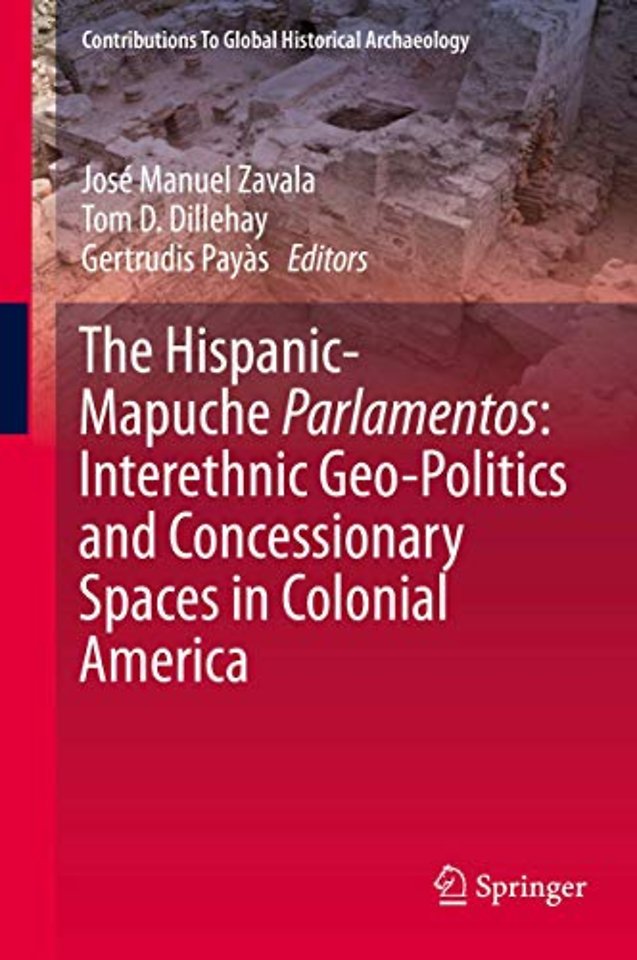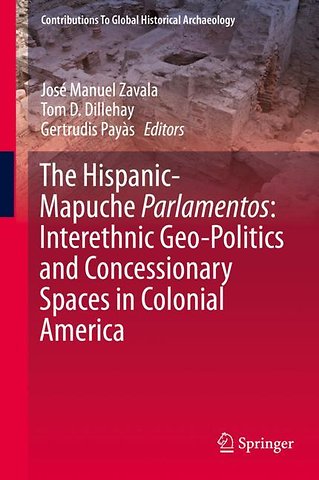The Hispanic-Mapuche Parlamentos: Interethnic Geo-Politics and Concessionary Spaces in Colonial America
Samenvatting
Anthropological histories and historical geographies of colonialism both have examined the material and discursive processes of colonization and have identified the opportunities for different kinds of relationships to emerge between Europeans and the indigenous people they encountered and in different ways colonized. These studies have revealed complex, differentiated, colonializing and colonialized identities, shifting and ambiguous political relations, social pluralities, and mutating and distinctive modes of colonization.
This book focuses on the complementary historical, linguistic, and archaeological evidence for indigenous resistance and resilience in the specific form of parlamento political negotiations or attempted treaties between the Spanish Crown and the Araucanians in south-central Chile from the late 1600s to the early 1800s. Armed conflict, the rejection of most Spanish material culture, and the use of the indigenous Mapundungun language at parlamentos were obvious forms of Araucanian resistance.
From a bigger picture, the book is based on an interdisciplinary perspective and asserts that historical archeology can provide better interpretations of past societies only if combined with other disciplines experienced by the treatment of existing data for historical periods, such as those provided by the written documents and which can be subjected to an anthropological, ethnohistorical, and linguistic reading by these disciplines. This creates tension because complementarity but also requires a questioning of the methods themselves as an offset look in order to include the other disciplinary perspectives.
Specificaties
Inhoudsopgave
<p>INTRODUCTION</p>
<p>José Manuel Zavala and Tom D. Dillehay</p>
<p>PART I. ETHNOHISTORY OF PARLAMENTOS </p>
<p>CHAPTER 1. Origin of the Spanish-Mapuche Parlamentos: The European Treaty Tradition and Mapuche Institutions of Negotiation</p>
<p>José Manuel Zavala</p>
<p>CHAPTER 2. The First Documented Parlamentos of 1593: Quilacoya, Rere, Taruchina and Maquegua</p>
<p>José Manuel Zavala</p>
<p>Appendix I</p>
<p>CHAPTER 3. Luis de Valdivia and the Parlamentos from 1605 to 1617</p>
<p>José Manuel Zavala and José Manuel Díaz-Blanco</p>
<p>CHAPTER 4. The Eighteenth Century Parlamentos</p>
<p>José Manuel Zavala </p>
<p>PART 2. PARLAMENTOS AND LANGUAGES </p>
<p>CHAPTER 5. Naming Hispanic-Indigenous Diplomacy: The Advent of the Word Parlamento in Chilean Use</p>
<p>Gertrudis Payàs</p>
<p>Appendix II</p>
<p>CHAPTER 6. The Interpreters of the Parlamentos: Agents of Communication During Two</p>
<p>Centuries of Political Contact</p>
<p>Gertrudis Payàs</p>
<p>PART 3. THE ARCHAEOLOGY OF PARLAMENTOS</p>
<p>CHAPTER 7. The Archaeology of Hispanic-Mapuche Parlamento Sites</p>
<p>Tom D. Dillehay</p>
<p>CHAPTER 8. Site Descriptions</p>
<p>Tom D. Dillehay, Jacob Sauer and José Manuel Zavala</p>
<p>CHAPTER 9. Material Remains</p>
<p>Tom D. Dillehay and Mario Pino </p>
<p>Appendix III</p>
<p>CHAPTER 10. Reflections on the Archaeology of the Parlamentos</p>
<p>Tom D. Dillehay</p>
<p>CONCLUSIONS</p>
<p>José Manuel Zavala and Tom D. Dillehay</p>
<p>FIGURE AND TABLE LIST</p>
FIGURES AND TABLES

